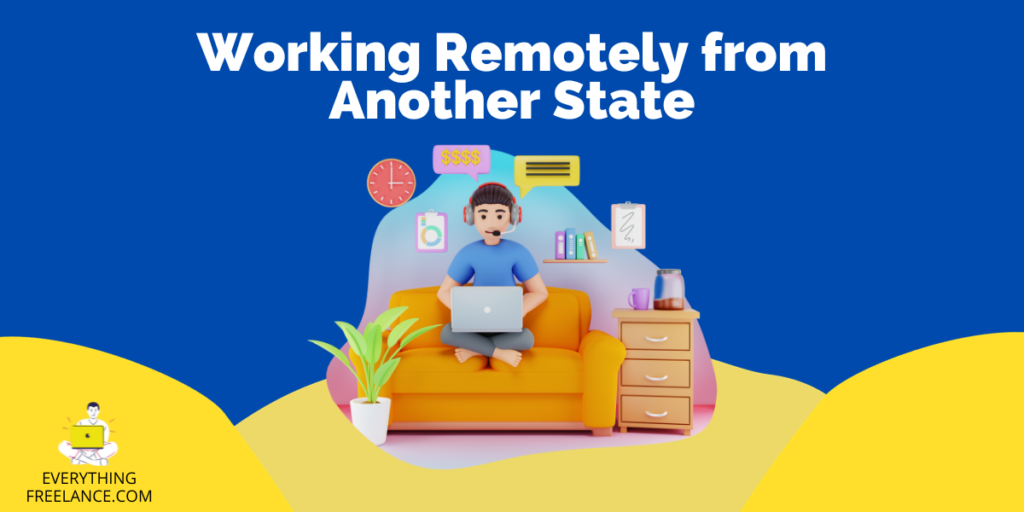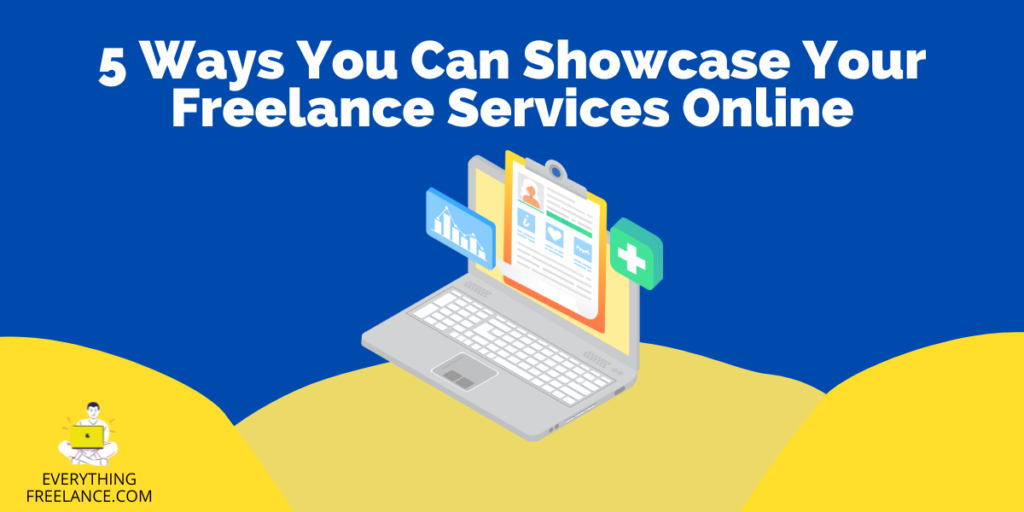In almost every industry, professionals are looking for more control over their careers and work experiences. For this specific reason, they are shifting towards freelancing. The freedom to work from anywhere, set your pace, and take on projects sounds attractive for employees who are tired of 9-5 office hours, but how much more money really can a freelancer earn in the modern world?
This question will always hit your mind if you want to freelance writing. But there is no definite answer to it. Because it depends on your industry, the experience you have, and the skills you’ve developed.
So, instead of giving you a specific number. I will share a few surveys and statistics to provide you with a rough estimate of how much freelancers make full time job.
Stats and Surveys about Freelancing
Surveys conducted by reputable organizations and statistics garnered from various resources indicates that freelancing is here to stay and flourish.
Contently conducted a survey in which 643 freelancers participated. They were asked to answer 25 questions. The results were quite impressive. According to the survey, only 10% of freelancers claimed to be freelance designers and videographers, and 80% accounted for writers, with 8% being content strategists and consultants.
62.5% of all 643 freelancers were working full time. Still keep in mind that, they were earning a massive amount of money.
The average income of all the respondents was $10,001-$20,000. 41% were making all this money by working just about 10 hours a week.
Now let’s look at some figures that would help understand why freelancing Is increasing in the US and elsewhere.
-
A report published by Pew Research Center stated that America has a total workforce of 157 million, in which more than 16 million are self-employed.
-
A study conducted by Freelancers Union and Upwork revealed that with 57 million workers, the US has the largest number of freelancers worldwide.
-
Following the US, India has the second-largest population of freelancers, at 23 million.
-
Freelancers drove $ 1 trillion or more than five per cent GDP of the US in 2018-19. The contribution is projected to rise gradually post 2020.
-
IRS collects 15.3 percent of American freelancers’ taxes regarding self-employment tax, which mostly goes towards social security and health insurance.
-
At the end of 2019, Europe had an 11 million freelance workforce, which is about five percent of the workforce in ten European states.
It is a proven fact that Covid-19 has changed work life and the business patterns drastically. The number of people working from homes is increasing companies are going bankrupt overnight. That’s why freelancing has become a lifestyle in the US and elsewhere in the world.
Five freelance pricing factors
-
Professional Experience: The number of years a freelancer has spent honing their skills and expertise is a primary determinant of their rates. Typically, more experienced freelancers command higher pay due to their wealth of knowledge and proven track record.
-
Specialized Skill Set: The complexity and uniqueness of a freelancer’s skill set significantly influence their pricing. Freelancers possessing in-demand, technical proficiencies like programming, mobile app development, or legal writing often charge premium rates for their specialized services.
-
Education and Training: Formal education and certified training can elevate a freelancer’s pricing power. While the impact varies across professions, these credentials generally provide freelancers with greater leverage when negotiating rates with clients.
-
Reputation and Track Record: A freelancer’s past project reviews are a powerful indicator of their performance. A history of positive feedback and successful project deliveries boosts their credibility and enables them to set higher rates.
-
Geographic Location: Although freelancers can work from anywhere in the world, the geographical location of the client can have a substantial impact on project pricing. Clients in different regions may have varying expectations and budget constraints, affecting the rates charged by freelancers. For instance, a client in Venezuela may not offer the same rates as one in the United States.
How Much Money do Freelancers Make?
Having seen the surveys and findings of numerous research studies, we come to the million-dollar question of how much money do freelancers make? The answer might surprise you, but it’s true.
Globally, a freelancer’s average income is $19 per hour, which is even lower than the US national average of $25 per hour. On the other hand, the amount of $19 isn’t a standard. However, European freelancers are earning more than American freelancers. While in Asian countries, people got attracted towards freelancing due to the dollar exchange rate to local currencies.
How much do the most freelancing professions make?
When it comes to freelancing, freelance income varies across different professions, often corresponding to the level of technical expertise involved. According to CNBC and additional research data, here are the average hourly rates and annual salaries for some of the most popular freelancing professions:
-
Writers: Freelance writers typically charge between $30 to $40 per hour, resulting in an annual income of around $42,000.
-
Editors: Freelance editors earn an average hourly rate ranging from $25 to $35, leading to an annual salary of approximately $40,000.
-
Programmers: Across various programming languages, freelance programmers command an average rate of $60 to $70 per hour, resulting in an annual income of approximately $120,000.
-
General Developers: Freelance developers, specializing in various areas, usually earn between $50 and $60 per hour, equating to an annual income of around $100,000.
-
Mobile Developers: On average, mobile app developers charge an hourly rate of $55 to $65 and earn an annual salary of $100,000.
-
Web Developers: Freelance web developers, responsible for designing and creating websites, charge an hourly rate of $50 to $60, with an annual income of approximately $90,000.
-
Graphic Designers: Freelance graphic designers set their hourly rates at around $40 to $45, resulting in an annual salary of about $90,000.
-
Transcribers: Freelance transcriptionists typically earn approximately $20 to $25 per hour, leading to a yearly income of about $32,000.
-
Bookkeepers: Freelance bookkeepers charge an hourly rate of $30 to $35, resulting in an annual salary of around $40,000.
-
Online Marketers: Freelance digital marketers command an hourly rate of around $50 and earn a yearly income of approximately $100,000.
-
Photographers: Freelance photographers typically charge an hourly rate ranging from $35 to $45, leading to an annual salary of around $42,000.
-
CRM Managers: Customer Relations Managers (CRMs) look to earn between $50 and $60 per hour, resulting in an annual salary of around $120,000.
-
Data Analysts: Freelance data analysts have an average hourly rate of $55 to $65, equating to a yearly salary of $100,000.
Most Freelancers are underpaid – Is it true?
You’ve heard right, and most freelancers are indeed underpaid. This happens because many freelancers, especially from Asian countries, never want to lose clients by quoting high prices in a fiercely competitive market.
Some freelancers are also responsible for this. They sell skills cheap because they give preference to flexible work life balance, working hours and enough free time over higher income. The community contributing most to underquote prices is the moms, whether they stay at home moms or single moms.
Problems Affecting Freelancer Pay
In current times, the Covid-19 pandemic is the biggest problem affecting freelancer pay. Freelancers in Europe and other parts of the world are getting pay cuts because buyers are bargaining hard when unemployment is plaguing the world.
In Europe, freelancer organizations decided to reduced their rates by 5 to 10 percent to provide relief to companies counter the economic downfall wrought by Covid-19, even though demand for freelancers is increasing rapidly.
Another biggest problem I also mentioned above is that freelancers keep minimum prices to attract new clients and avoid bargaining higher paying clients. Due to this, anyone that asks for higher pay will lose their work and client also.
The biggest and foremost problem money freelancing is that most countries don’t have freelancers union. Hence, they don’t have a collective voice against all of the issues freelancers facing related to payments.
Wrapping UP
In the long term and coming years, the freelance industry has to face a lot of challenges. The working dynamics are changing continuously due to the Covid-19 pandemic. As a result, companies around the world are going towards bankruptcy, due to which the demand for freelancers might go down in the coming years.
On the other hand, companies are forcing their workers to work from home, and demand for remote workers is increasing rapidly. This is the only situation that can bring some buoyancy to the freelance industry. Freelancers are advised to take proper measures for survival. They need to stop quoting low rates, always negotiate. Look beyond job boards, work on tapping your network and refine your niche.






































































































